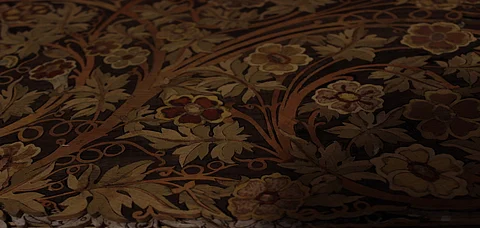
- Destinations
- Experiences
- Stay
- What's new
- Editor’s Picks
- Responsible Tourism
- CampaignsCampaigns
- Subscribe

Over the years, Mysuru's culturally rich heritage has left many spellbound. If you've had the chance to visit the City of Palaces, its charm is sure to rub off on you. The cultural capital of Karnataka, Mysuru&rsquos legacy can be traced through a historic walk across the city. On a recent trip, I had the opportunity to do just that. And I ended up exploring Mysuru's age-old art form, inlay art.
Rosewood inlay, according to some records, dates back 400 years. The rulers of Mysuru&mdashthe Wodeyars&mdashpatronised this art form, which is reflected well in the Mysore Palace. Primarily rosewood is used for creating the final pieces, however different kinds of wood are used (such as jackfruit, champa, etc) depending upon the texture and colour required.
What is Inlay Art
Inlay art is an umbrella term that involves techniques of inserting contrasting coloured pieces into a depression created on a base. The pieces inserted can be made out of wood, plastic or ivory. The base material can vary, but wood is the most common choice.
What is inlay in wood
Inlay in wood generally uses wood veneers that are handcrafted by artisans and inserted into the base. Multiple intricate designs are drawn and then worked upon to create the final pieces. The end products are generally paintings, pen stands, wall hangings and also furniture.
Inlay art incorporates various forms. One such art form is pietra dura. Here, stone is used instead of wood veneers. These stones, mostly marble, are crafted on a green, white or black marble base. Sometimes, precious or semi precious stones are used in the matrix as well.
Mysore's rosewood inlay has been passed from generation to geenration within families. Creating a single piece requires hours of work, patience and perseverance. The process starts with a detailed sketch of the product, where all the dimensions, and colours are marked. The artisans then cut out the figures by placing them on various wood pieces. Later, small depressions are made on the base to fit the cutout designs. The interwoven pieces of wood are then placed on the surface, nailed together and flattened by running them through a mechanical press. After this, they are polished several times to give them a vibrant shine.
Many artisans are now resorting to more economical materials instead of wood due to the price. However, some artisans do not wish to hamper the spirit of the art form and continue with wood, despite continued losses.
